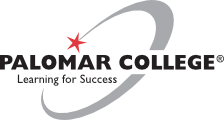
Course Outline
ENGR 126 - Introduction to Electrical and Computer Engineering
Fall Semester 2010
Basic Course Information
Courses numbered 1 - 49 are remedial or college preparatory courses which do not apply toward an A. A. Degree and are not intended for transfer. Courses numbered 50-99 apply toward an AA Degree, but are not intended for transfer. Courses numbered 100 and higher apply toward an AA Degree and/or are intended for transfer to a four-year college or university.
D - Credit - Degree Applicable
ENGR
Introduction to Electrical and Computer Engineering
Units and Hours
4
4
Grade/Pass/No Pass
Hour Type
Units
Weekly Hours
Semester Hours x 16 Weeks
Semester Hours x 18 Weeks
Lecture Category -
3.00
3.00
x 16 Weeks - 48.00
x 18 Weeks - 54.00
Lab Category -
1.00
3.00
x 16 Weeks - 48.00
x 18 Weeks - 54.00
Subtotal -
6.00
x 16 Weeks - 96.00
x 18 Weeks - 108.00
Out of Class Hour -
6.00
x 16 Weeks - 96.00
x 18 Weeks - 108.00
Totals -
12.00
x 16 Weeks - 192.00
x 18 Weeks - 216.00
Hour Type
Units
Weekly Hours
Semester Hours x 16 Weeks
Semester Hours x 18 Weeks
Lecture Category -
3.00
3.00
x 16 Weeks - 48.00
x 18 Weeks - 54.00
Lab Category -
1.00
3.00
x 16 Weeks - 48.00
x 18 Weeks - 54.00
Subtotal -
6.00
x 16 Weeks - 96.00
x 18 Weeks - 108.00
Out of Class Hour -
6.00
x 16 Weeks - 96.00
x 18 Weeks - 108.00
Totals -
12.00
x 16 Weeks - 192.00
x 18 Weeks - 216.00
Requisites
To satisfy a prerequisite, the student must have earned a letter grade of A, B, C or P(Pass) in the prerequisite course, unless otherwise stated.
Prerequisite: MATH 140
Catalog Description
Introductory concepts covering a broad range of topics in Electrical and Computer Engineering presented in an integrated approach at a hands-on level. Students work in small teams to analyze, build, and test a small programmable robot for competition at the end of the semester. Provides basic understanding and skills for students to later build their theoretical understanding in more advanced physics and engineering courses.
Student Learning Outcomes
Outcome
Successful students will be able to construct an electronics circuit on a breadboard. Students will be asked to construct a working H-bridge circuit on a breadboard.
Successful students will be able to design an electronics circuit. Students will be asked to design an H-bridge circuit using readily available components.
Successful students will combine circuits. Students will be asked to combine the H-bridge circuit into the existing robotics project.
Specific Course Objectives
Objective
Upon successful completion of the course, the student will be able to:
- Design and implement an electronic circuit related to the construction of a course project.
Methods of Instruction
Methods of Instruction may include, but are not limited to, the following:
Discussion
Lab
Lecture
Practicum
Content in Terms of Specific Body of Knowledge
LECTURE:
- Introduction to Electrical and Computer Engineering
- Basic Circuit Elements
- Circuit Construction
- Prototyping
- Circuit Analysis
- Resistive Networks and Equivalent Models
- Diodes and Piecewise Linear Models
- Modeling Bipolar Transistors
- Transistor Circuits
- Amplifiers and Operational Amplifiers
- Binary Logic Circuits
- Combinational Logic I: Boolean Algebra
- Combinational Logic II: Karnaugh Maps
- Flip Flops
- Sequential Logic Circuits
- Finite State Machines
- Microcontrollers and Programmable Logic
- CMOS Programming
LABORATORY:
Building a series of robot subsystems, each of which illustrates one or more of the above topics.
Textbooks/Resources
Textbook
Mimms III, Forrest M.
Electronic Formulas, Symbols & Circuits
1st
Lincolnwood
Master Publishing, Inc.
2004
Assignments
Mims III, Forrest M.
Electronic Formulas, Symbols & Circuits. Master Publishing, Inc.
Mims, Forest. Getting Started in Electronics. LLH Technical Publishing.
Written and/or quantitative answers for assigned work and/or examinations may be required.
Problem-solving exercises will be assigned from the text and instructor’s handouts. These exercises require a high degree of critical thinking.
Preparation may include such activities as readings in assigned text, review of lecture material, solving assigned problems, and answering assigned questions.
Methods of Assessment
Evaluation Method
- Class Work
- Exams/Tests
- Homework
- Lab Activities
- Projects
Open Entry/Open Exit
- Not Open Entry/Open Exit
Repeatability
No
Contact Person
Gerwig, Arthur